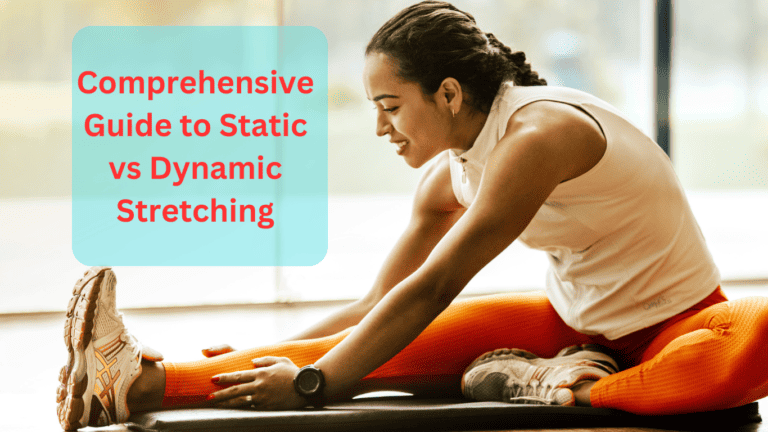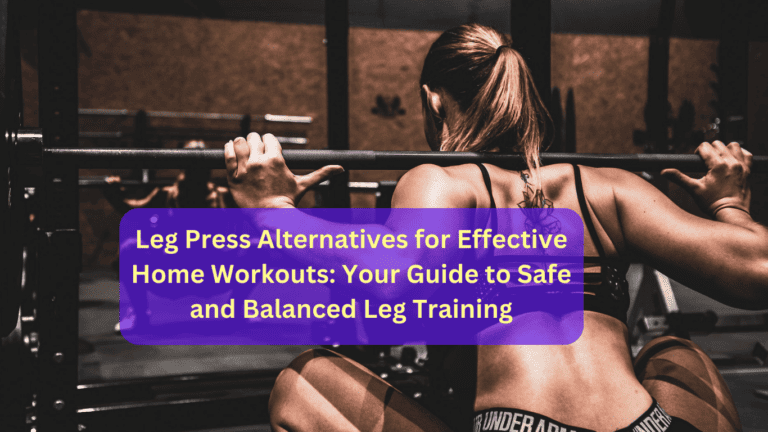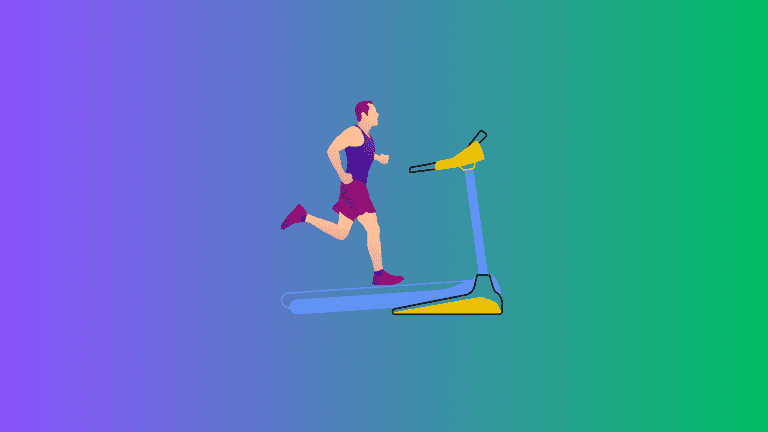Learn How to Barbell Squat Like a Pro in 2023
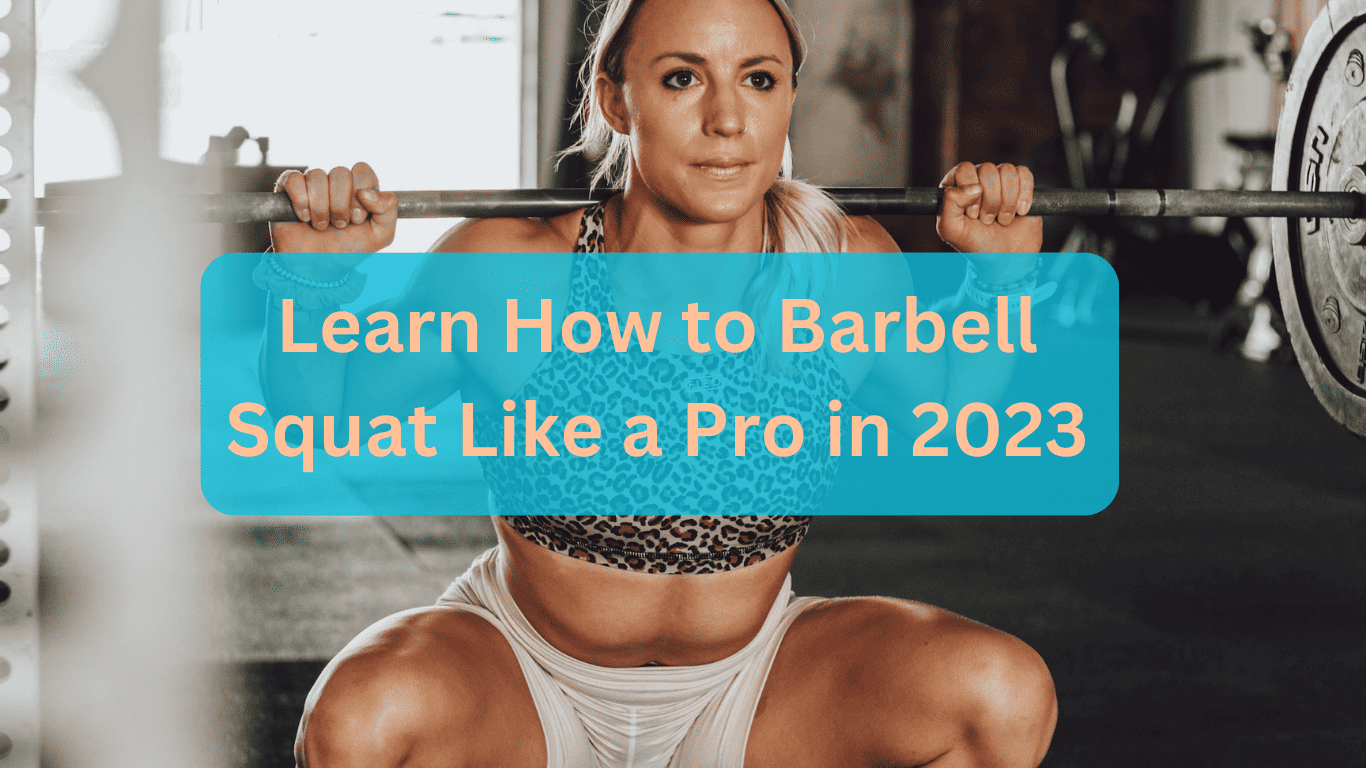
The barbell back squat is one of the best exercises for building full body strength. Properly performing this exercise requires learning proper squat techniques to maximize results while reducing injury risk. This comprehensive guide will teach you how to barbell squat like a pro.
- Learn proper squat form from foot stance to depth
- Discover all the benefits of barbell squats
- Follow step-by-step instructions for beginners
- Get tips to fix common form mistakes
- Review squat variations beyond basic back squats
- Understand safety precautions to avoid injury
Mastering the art of the barbell squat takes time and practice. By following the advice in this article, you’ll be squatting like a pro in no time. Whether you’re new to strength training or an experienced lifter looking to perfect your technique, this guide will help you squat with proper form.
Let’s get started!
What Is a Barbell Squat?
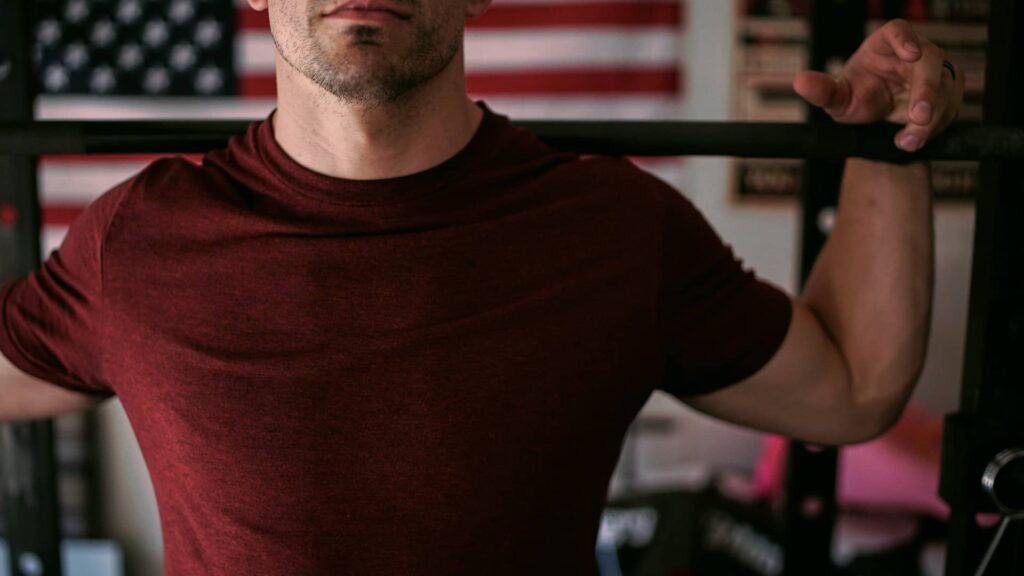
The barbell back squat is a foundational strength training exercise where you rest a loaded barbell across your upper back shoulders and squat down before standing back up. Properly performing a barbell squat requires good technique to squat with proper form while bearing the load. This is a great alternative leg workout without a leg press machine.
With correct form, it is a more stable exercise than a bodyweight squat, allowing you to lift heavier weights and build greater lower body and core strength. Mastering the proper barbell squat technique takes practice but allows you to maximize the benefits of this functional compound lift.
Barbell Squat Benefits
The barbell back squat offers numerous benefits that make it one of the best full-body strength-building exercises. Regularly performing squats can lead to:
- Increased lower body and core strength
- Greater muscle mass, especially in the legs
- Enhanced athletic performance and vertical leap
- Improved mobility through a large range of motion
- Better posture from strengthened muscles
- Reduced injury risk when done properly
- Functional, compound movement that trains multiple muscle groups
- Progressive overload potential with heavier weights
- Stronger bones from bearing weight through the legs
By incorporating barbell squats into your routine, you can build incredible leg strength for sports, everyday life, and beyond.
Let’s look closer at the major muscles targeted during the squatting motion.
Muscles Target During Squat
The barbell back squat engages several key muscle groups that work together to perform the movement. When done with proper form, squats target the major muscles of the legs, glutes, and core.
Maintaining a neutral spine throughout the lift also requires upper back strength to avoid rounding the shoulders as you squat down. The main muscles involved during barbell squats include:
- Quads – Squatting down heavily targets the quadriceps muscles in the front of the thighs.
- Hamstrings – The hamstrings support knee flexion to squat down and hip extension to stand.
- Glutes – Your glutes power hip drive coming out of the bottom squat position.
- Calves – The calves contract to stabilize your feet and ankles during the squat.
- Core – Your core muscles brace to keep a neutral spine against the load on your back.
- Upper back – Key back muscles like the lats activate to support the barbell across your back.
Together, these muscle groups allow you to properly perform a deep squat while bearing significant weight for strength and hypertrophy gains.
How To Prepare Your Body Ready for Barbell Squat
Before loading up the barbell to start squatting, it’s important to properly prepare your body to perform the movement safely and effectively. Warming up and activating key muscles can help you maintain proper squat technique throughout your sets.
Here are some tips for getting your body ready before barbell squatting:
- Dynamic warm-up – Perform bodyweight squats and other leg swings and movements to increase blood flow to your lower body.
- Foam roll – Use a foam roller to massage and loosen up the legs, glutes, and thoracic spine.
- Stretch hip flexors – Tight hip flexors can restrict squat depth so be sure to stretch them out.
- Activate glutes – Do glute bridges and other activation exercises to engage your glutes before squatting.
- Practice form – Do bodyweight squats focusing on proper stance, depth, and technique.
Preparing your muscles and joints will allow you to safely squat to proper depth with optimal form right from your first working set.
How To Do Barbell Squat
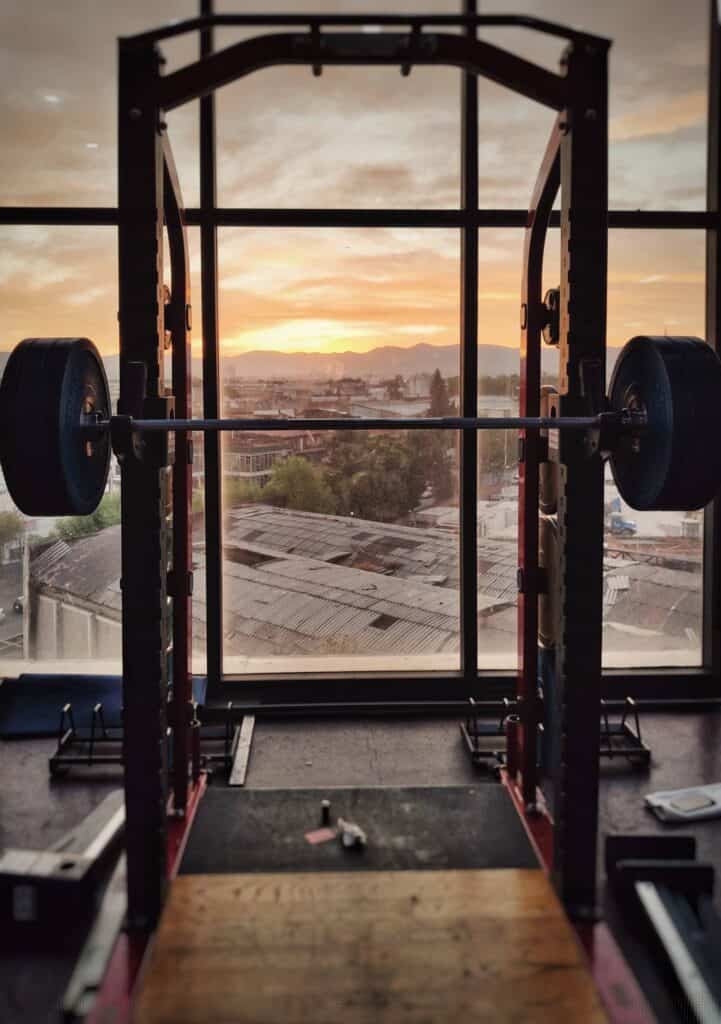
Proper form during barbell squats requires practice to avoid injuries. Follow these steps for a successful barbell squat and reference on your next leg workout.
Step 1. Setup
Foot Stance
Before heading to the bar, it is important to ensure that certain key setup steps are taken into consideration. First, position yourself in the squat rack and carefully position your feet. It is recommended that you place your feet a little wider than shoulder-width apart and angle your toes outwards at an approximate angle of 15-30 degrees. This will help to ensure that your knees and thighs align with your feet without collapsing inwards. Also, it is important to adjust the width of your stance based on your hip anatomy to effectively and comfortably squat to the required depth.
Your upper body should remain upright throughout the lift, so set your feet in a position that allows you to squat down without the upper body falling forward.
Proper Bar and Hand Placement
After setting your foot position, step under the barbell and rest it across your upper back. The bar should sit below your neck, across the meaty part of your traps. Grip the bar just outside shoulder-width using a thumbless overhand grip to keep your wrists in a neutral position. Squeeze your shoulder blades together tightly to create tension through your upper back muscles before lifting the bar off the hooks.
Your upper back must stay tight throughout the lift to properly support the barbell across your back. Keep your elbows pointed down towards the floor to maintain a vertical bar path as you squat.
Step 2. Unrack Your Barbell
Properly unracking the barbell sets you up for a successful set of squats. Follow these tips for unracking the bar:
- Keep feet shoulder-width apart, toes slightly angled out
- Take a deep breath and brace your core before unracking
- Maintain upper back tightness and retract shoulders
- Lift the bar straight up and back, keeping your chest up
- Avoid upper body rounding forward off the hooks
- Step back from the rack in control of the bar
- Keep the bar balanced evenly across your upper back
- Squeeze shoulder blades together throughout the lift
With the bar unracked correctly, you can step into your first squat rep with proper positioning and tension.
Step 3. Squat with proper technique
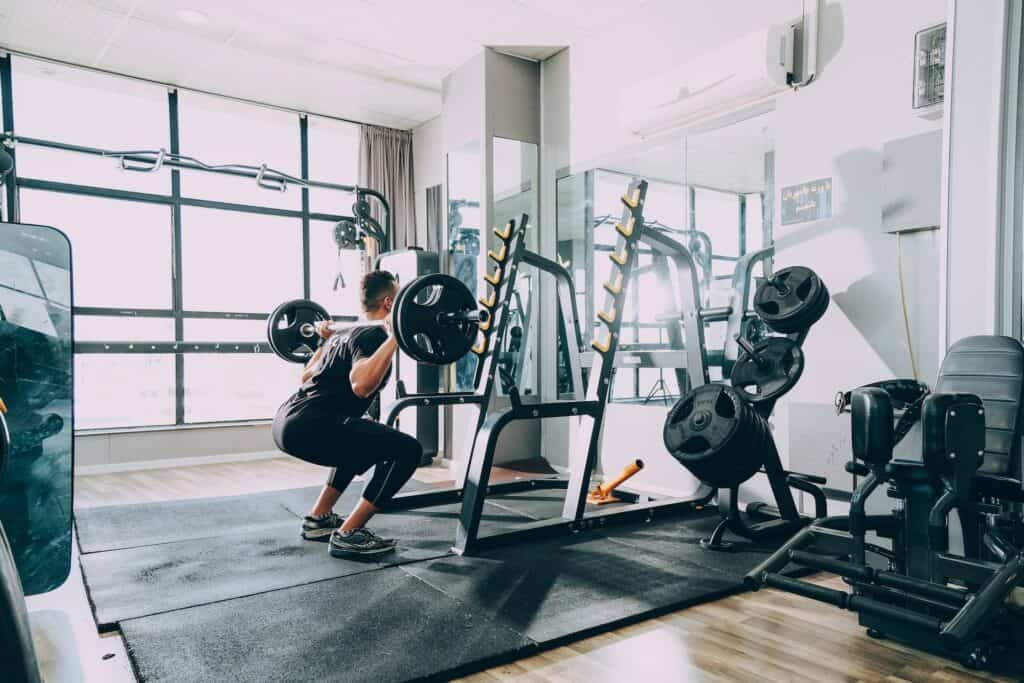
Once you’ve unracked the bar, breathe in and brace your core again as you begin descending into your first squat. It is crucial to keep a tight body to avoid injury to your spinal disc.
Push your hips back while keeping your chest up, allowing your knees to bend as you squat down. Descend until your hip crease drops below parallel, meaning the top of your thighs are at least parallel to the floor at the bottom position. Going below parallel engages your glutes and hamstrings for a full range of motion.
Avoid half squats above parallel, as they don’t provide the same strength and hypertrophy benefits. Keep your knees aligned with your toes to avoid caving inward as you squat down. Go down with control, avoiding a gravity drop by maintaining whole-body tension.
Breaking Parallel
To squat properly, go below parallel. This means your hip crease should drop below your knees. Control your descent and avoid half squats. Keep your chest up and go as deep as your upper thighs below parallel. Practicing this will help you build strength in the bottom position.
Step 4. Squat Back Up
To squat properly, reach the desired depth and drive back up by engaging your glutes, hamstrings, and inner thighs. Push your hips forward and extend your legs, keeping your core braced. Drive through your heels and squeeze your glutes while standing up. Keep your feet hip-width apart and knees tracking in line with your toes. Control the movement on the way down and up to maintain proper barbell squat technique.
Different Variation Forms of Barbell Squat
While the traditional back squat is excellent, there are several squat variations that provide unique benefits. Adding these to your routine can target muscles from different angles:
- Front squat – The bar in front places greater emphasis on quads
- Smith machine squat – Fixed bar path helps groove proper form
- Goblet squat – Holding a weight at the chest builds core strength
- Overhead squat – Requires greater mobility and stabilization
- Belt squat – Isolate legs without taxing the back
- Split squat – Unilateral move works legs independently
Varying your squats will allow you to emphasize different muscles while maintaining interest in your training. Just be sure to master the back squat form first before trying more advanced variations.
Tips On Proper Squat Form
To perform an effective squat, focus on the following form cues:
- Look straight ahead or slightly upward during the lift to keep your chest lifted. This helps maintain an upright torso position as you squat down.
- Maintain an upright posture as you descend, initiating the movement by pushing your hips back while keeping your chest up.
- Avoid rounding your upper back as you squat.
- Go down to at least parallel depth or lower each rep to engage your muscles through a full range of motion.
- Keep your knees aligned with your toes as you squat down rather than letting them cave inward.
- Focus on pushing your knees outward in the same direction as your toes are angled to keep proper alignment. This places less strain on your knees during the descent.
- Also, be sure your heels stay planted on the floor throughout the squat rather than coming up. Driving through your heels as you descend and ascend helps you maintain balance and stability.
Following these proper barbell squat form tips will allow you to maximize your strength and growth.
Safety Tips on Barbell Squat
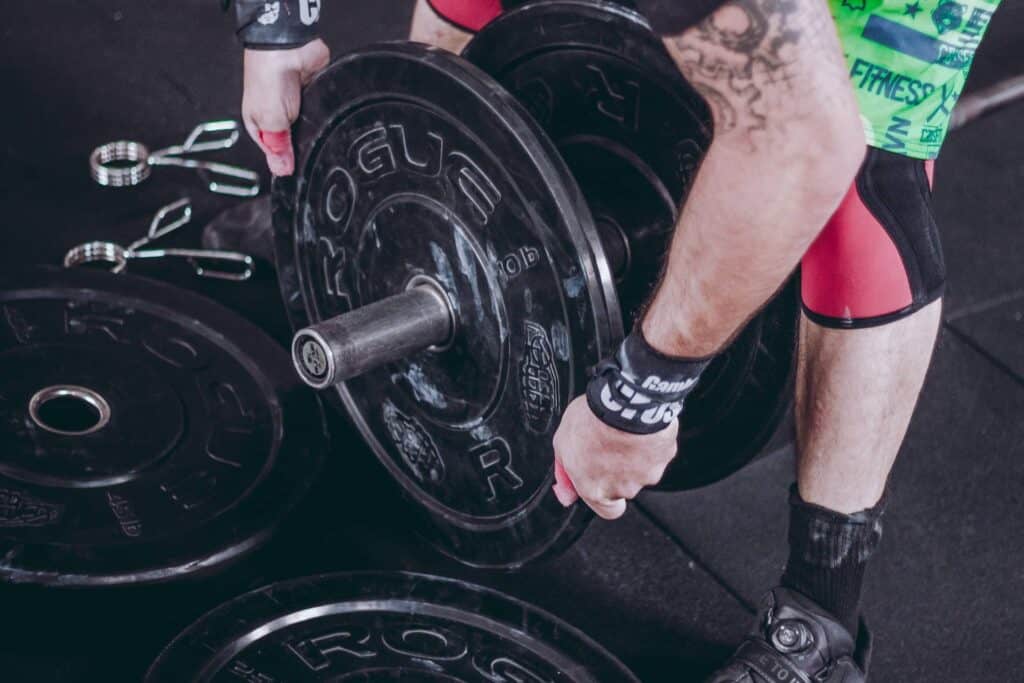
When back squatting with a barbell, it’s important to take precautions to lift safely. Here are some key safety tips:
- Use a power rack with adjustable safety pins set just below your lowest squat depth. This will catch the weight if you fail on a rep.
- Ask a spotter to stand near you when attempting heavier weights. They can help you rack the bar if needed.
- Start with lightweight while perfecting form before increasing load.
- Wear a weightlifting belt for core support when lifting heavy. Consider knee sleeves if you have joint issues.
- Using the appropriate barbell designed for squats is crucial for maintaining proper safety and form. It is essential to carefully select the correct equipment to effectively prevent any potential injuries.
- Make sure the bar pad is secure across your upper back before unracking weight.
- Make sure your barbell is properly maintained for peak performance
By sticking to proper safety tips, you can effectively squat with heavier weights to see maximum strength gains over time.
Comom Injuries
While extremely effective when performed properly, poor squat technique can lead to injury over time. Common squat-related injuries include:
- Lower back pain from rounding the back
- Knee pain if knees cave inward
- Hip pain from lack of mobility
- Wrist pain from improper grip width or bar position
- Neck strain from looking up instead of straight ahead
- Groin pain from a narrow stance or poor hip mobility
To avoid injuries when squatting:
- Maintain neutral spine alignment and avoid rounding back
- Keep knees aligned with toes to prevent cave-in
- Improve hip and ankle mobility for proper depth
- Use proper grip width and bar position across the back
- Look straight ahead, keep your head aligned with the spine
- Stance width should correspond to your hip anatomy
With sound technique and proper form, barbell back squats can be performed safely.
Squat Stretches
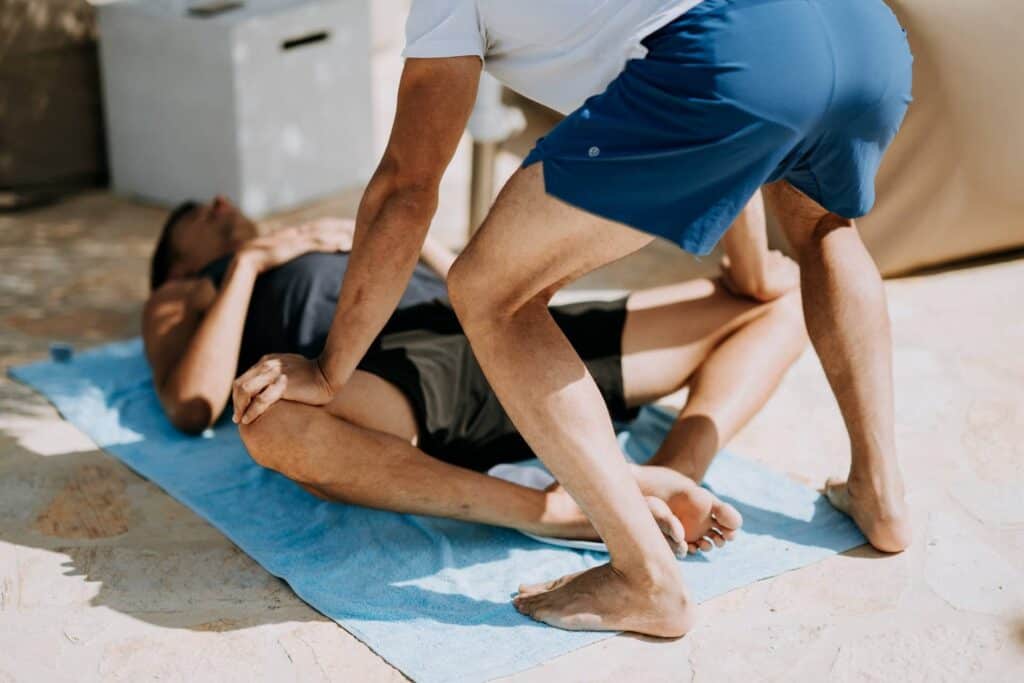
Performing targeted stretches before squatting prepares your muscles and enhances mobility for proper form. Useful squat stretches include:
- Pigeon pose – Stretches hip flexors and glutes
- Rocking backward stretch – Opens up tight hip flexors
- Cat and cow pose – Loosens core and lower back
- Standing quad stretch – Lengthens the quadriceps
- Calf stretch – Extends tight, shortened calves
- Inner thigh stretch – Widens stance for hips
- Child’s pose – Provides overall lower body relief
Be sure to incorporate a mix of dynamic stretches and longer static holds in your warm-up. Taking time to properly stretch will allow you to squat with better mechanics and a fuller range of motion.
Conclusion
The barbell back squat is a highly effective exercise that can be easily performed in a variety of settings, including your garage, home gym, or local fitness center.
Although this exercise can be done by anyone, it is crucial to master the proper form, which involves learning key techniques such as foot placement and ideal depth. With consistent practice and careful attention to form, you will be able to perform squats with greater ease and gradually increase the amount of weight you use.
Remember to look up or straight ahead during your squat, and avoid rounding your shoulder. Go down to at least parallel death or lower to fully engage your leg muscles.
Make sure you properly take care of your leg muscles after a workout so you can get back to the gym right away. Control the descent by hinging at your hips while keeping your chest lifted. Then drive back up by squeezing your glutes as you complete each rep.
Be patient as you work on your form and you’ll be squatting like a pro in no time.
FAQ
How many barbell squats for beginners?
When you’re new to barbell back squats, it’s smart to start with lighter weights and higher reps as you learn the proper squat technique. Avoid upper body falls forward because you will put too much strain on your back and knees.
Aim for 2-3 sets of 10 reps using only the 45lb barbell or minimal weight. Focus on form, engage your core, and keep your body tight. Build a solid foundation with perfect form before increasing the weight. Once you’ve mastered the movement, progress to 3 sets of 10 reps with heavier weights. Go slowly and focus on the movement before increasing the weight. squats?
How wide should my stance be when barbell squatting?
For the ideal squat stance width, start with feet slightly wider than shoulder-width apart and toes turned out. Avoid overly wide or narrow stances, test out different foot positions, and ensure the entire foot remains planted throughout. Find the ideal width that supports a balanced and proper squatting technique.
How low should I squat with a barbell?
When barbell back squatting, descend low enough to break parallel, meaning your hips drop below your knees until your upper thighs are at least parallel to the floor. Allow your knees to bend and hips to hinge back, keeping your chest lifted and feet angled out. Reaching this bottom range of motion engages your muscles through a full squat versus partial half squats. Focus on reaching parallel depth or lowering each rep.
How much weight should I start with for barbell squats?
When performing barbell back squats, you want to descend to at least parallel depth each rep. Start by squatting with lighter weight plates on the bar and no lower than a Smith machine if new to the exercise. Allow your hips to drop below your knees until your upper thighs are parallel to the floor in the bottom position. Letting your knees bend and hips hinge back as needed to dip below parallel engages more muscles through a full range of motion versus partial half squats above parallel. Focus on reaching at least parallel depth before progressing to lower once you build mobility. Breaking parallel recruits more leg muscles for strength and hypertrophy gains from your squat
